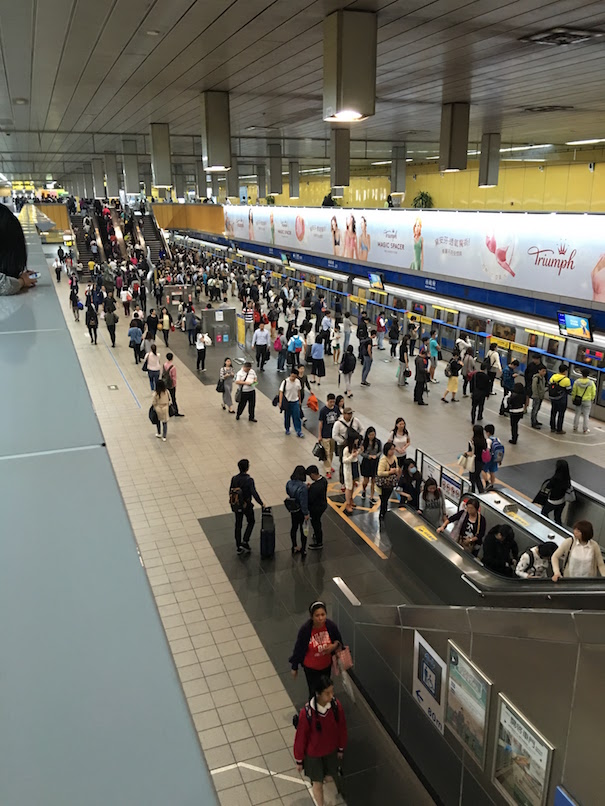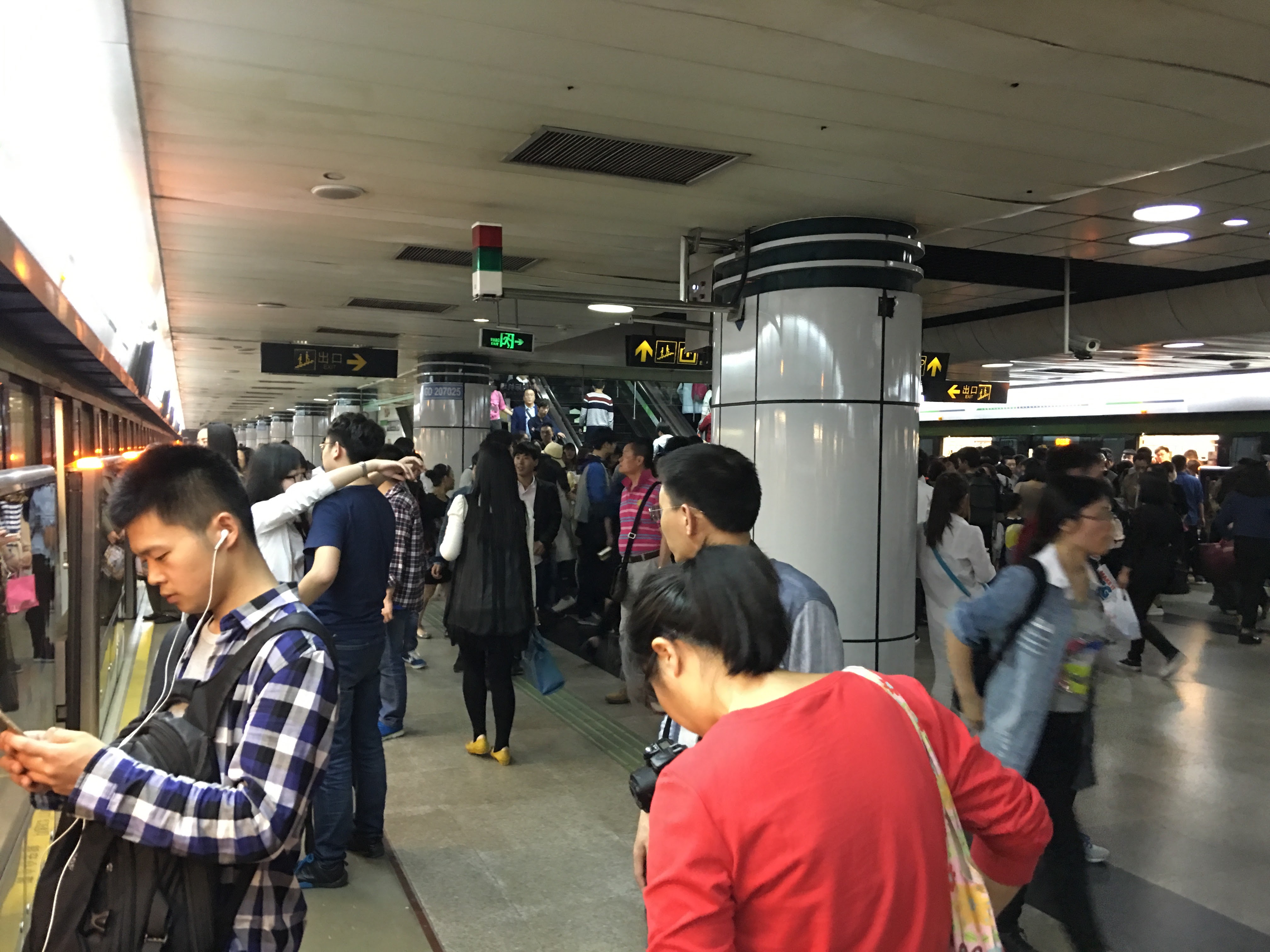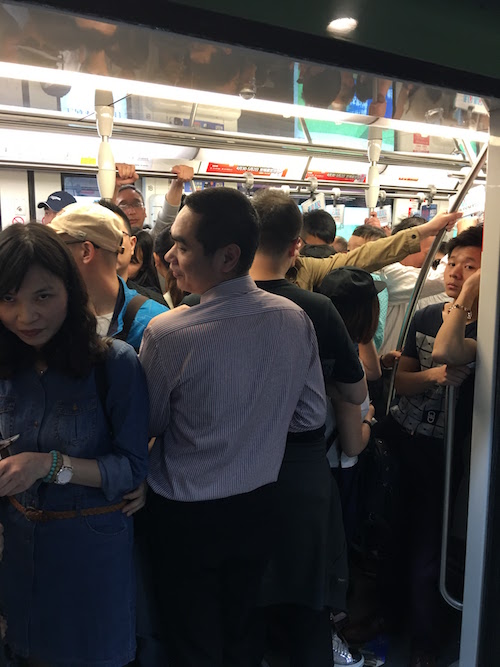Scattered Thoughts on Asia: Public Transportation
Jun 01, 2016
1 Month in Taiwan, China, Hong Kong and Singapore
This Wednesday I wrapped up a month and a half abroad in Asia starting with Japan (a tour through the country with my roommate adam. I wrote about it earlier in this blog.) Then I moved on to:
- Taipei, Taiwan for 4 days
- Shanghai, China for 3 days
- Hong Kong for 9 days
- Singapore for 8 days
- Taichung, Taiwan for 6 days
I have been a solo traveler, and this was no change. However, I had never stayed abroad for so long before - nor have I hit so many cities in such a long period of time. Luckily I did not miss any flights and for the most part stayed on schedule.
Now that I am back in America, I thought that I would write a bit about my thoughts about Asia before it all flows away once I get back into the flow of life.
This is part of a series of posts that I hope to get out in the coming weeks, all about different thoughts I’ve had during my travels. In my last post, I had talked about the food and then I talked about the architecture. In this one, I am going to focus on the public transportation systems.
Transportation Systems
Singapore has the most ambitious plans out of all the countries I visited. They want to expand their MRT system to cover the entire island. Supposedly, a new set of tracks comes online every couple years. I find it really amusing that the Singaporean people are so blase about something like this happening - “Oh yeah, there’s a new set of tracks. Wanna try it out?” In the US, it would be a second coming of Jesus if the US government were able to bring a new set of tracks out every decade.
The trains in Singapore hit the stations pretty consistently, but Hong Kong’s is the most reliable system. I read that they feel themselves inferior to the MTR in Hong Kong, which apparently are never late. I love that a system as awesome’s as Singapore’s MRT can have an inferiority complex when compared to Hong Kong’s. It is a weird feeling to have when you miss a train and then suddenly feel that there’s no problem - another will follow in about 4 minutes. Four minutes! Even with BART, one train arrives every 20.
Taipei’s MRT is nothing to sneeze at either. I have read that is the most expensive of the three to build (roughly $18 Billion), but it certainly does not get passed on to the customers. It costs about 80 cents to travel several miles.

Japan has a sprawling and crazy patchwork of transportation systems (that’s also the most expensive - I spent about $500 for my Japan Rail pass and each bus ride is about $2, which is near SF levels), but at least they have the Shinkansen - which is the fastest and smoothest travel experience I’ve ever had. Taiwan has an identical system that sends their version of the Japanese Shinkansen up and down the island every hour (at a faster frequency than the Bay Area Caltrain in case you are keeping comparisons).
Shanghai’s system is developing but it feels like the most “high-tech” of all the ones that I have ridden. It has the most gadgets and gizmos inside the car itself - lights telling you where the train is going next, announcements in Chinese and English.

With all that being said, these trains can get pretty crowded. In Shanghai, everything gets crowded but sometimes the crowds on these trains get pretty nuts.

Hong Kong and Shanghai have their trains go under bodies of water (Hong Kong goes under Victoria Harbour and Shanghai goes under the Huangpu River). I am amused to see that when they go through these tunnels, they take the opportunity to show you adverts on the tunnel walls. Shanghai’s are like digital flipbooks, refreshing so that you can see a silent moving advert.
I wasn’t able to ride many of the buses in Singapore (I always am seeing them a bit crowded so I figured that the MRT and a bit of a walk ain’t that bad) but the Hong Kong buses I used a lot. They were never expensive ($2 USD at the worst) and had immense range. One of the big improvements Google Maps has made since my last time in Asia is that around the public transporation data. I was able to take a bus out to the Taiwanese Palace Museum rather than take an Uber (an Uber would have been about $9 USD from my hotel but the bus + MRT was $1.50). The bus remains a gawky way to travel, but there’s something to be said about being able to see the streets of the cities I was traveling through.
So all in all, the transportation systems in Asia: A+. Crowded, but clean and efficient too.
Why Do Our Transit Systems Suck?
There has been a lot of ink spilled about why Asia’s mass transit systems are so much better than that in the US. Here are just a few thoughts off the top of my head:
-
Land rights in Singapore and China are different. People don’t actually own the land beneath their homes. They just lease it for 99 years. This makes it easier to exercise eminent domain to build tracks under or over the ground. Imagine the hufflepuff it would cause in the US if Americans found that they no longer own their own land. That’ll set some baby boomers alight.
-
Cheaper labor to build the products. Some of it due to lower living costs. Some of it from near-slave labor imported from abroad. Cough.
-
Broadly demonstrated customer need. BART is overcrowded today but the major transit system in America right now remains the car. Not enough people have demonstrated a need for it.
-
Technical expertise. The people who know how to build these things are nearby. I note that the company who built the Caltrain’s train cars are Japanese. There is a reason why the Taiwanese High Speed Rail feels so similar to the Shinkansen - they are kind of the same. The Japanese (and increasingly the Chinese) know how to make really fast trains.
-
America is big, yo.
My final thought on Asia’s transit system. The systems in Asia are a real refreshing place to be, especially when you consider that the main connotation associated to the buses and trains in Northern California are that they carry more homeless than legit riders.
Share